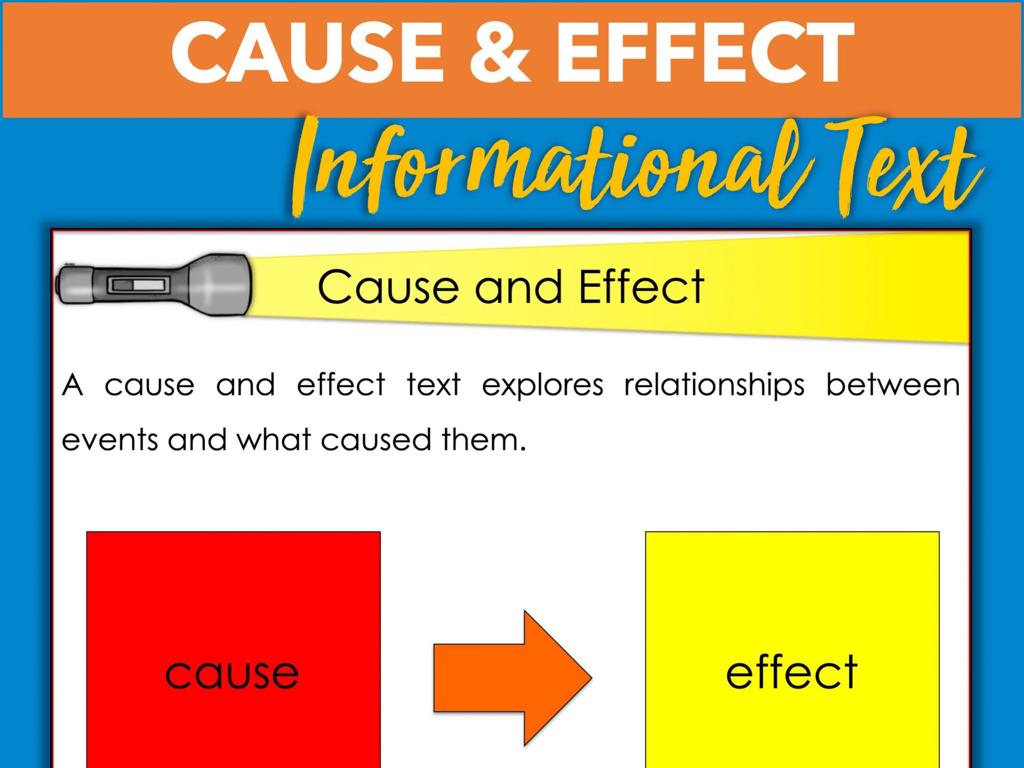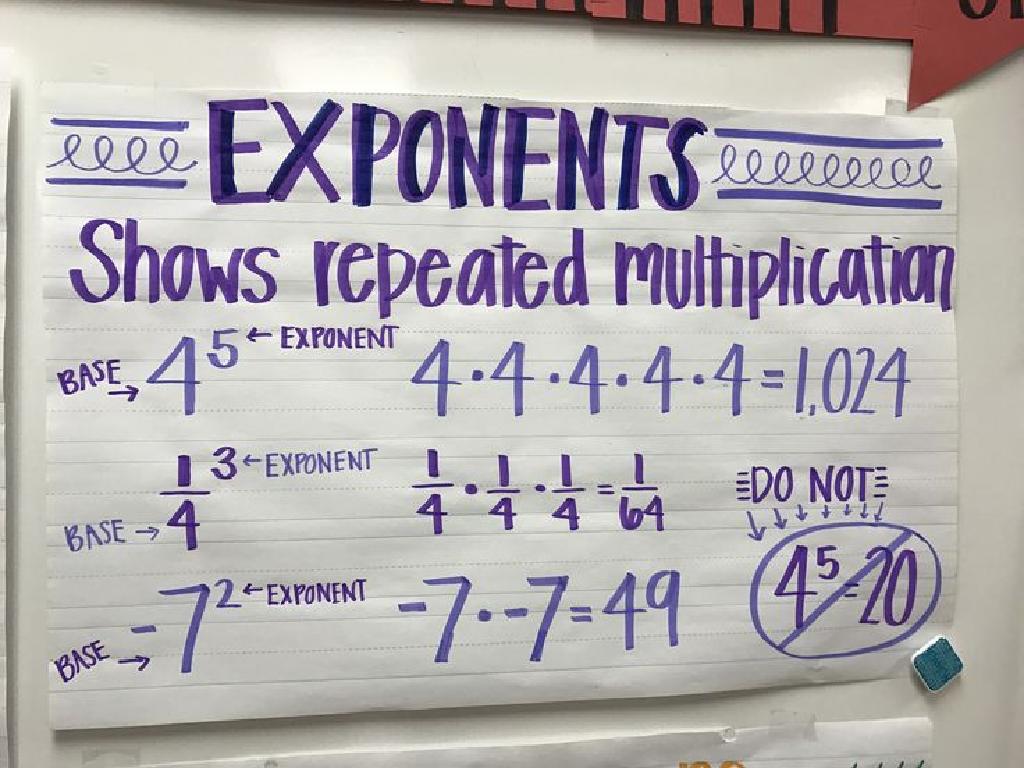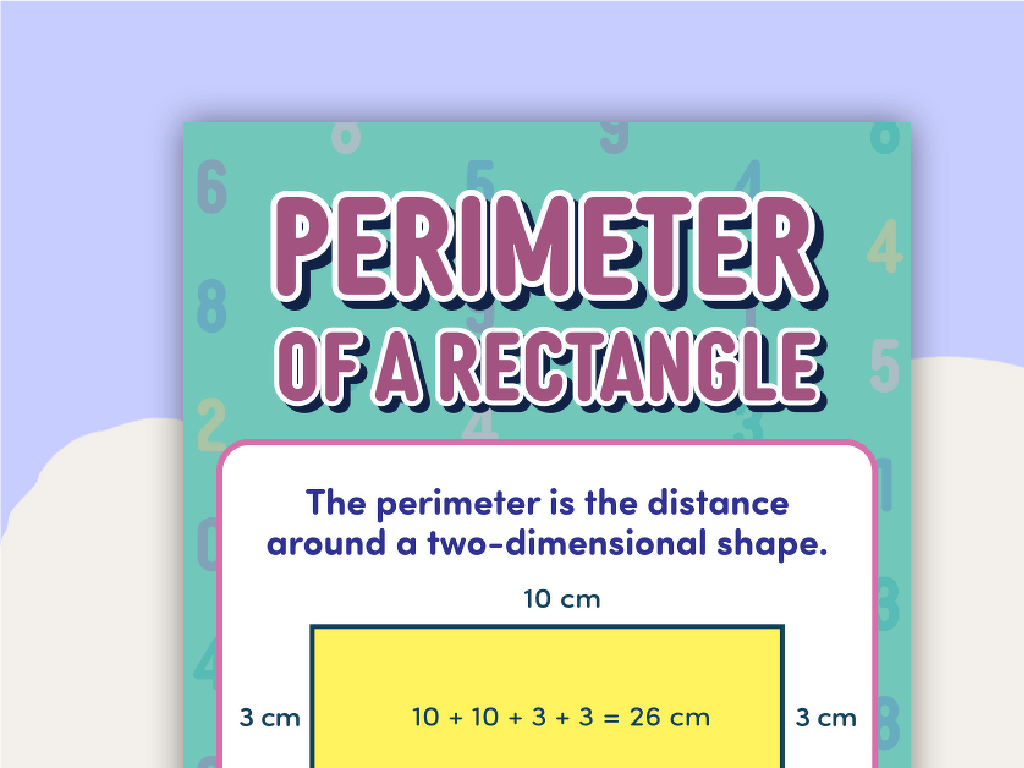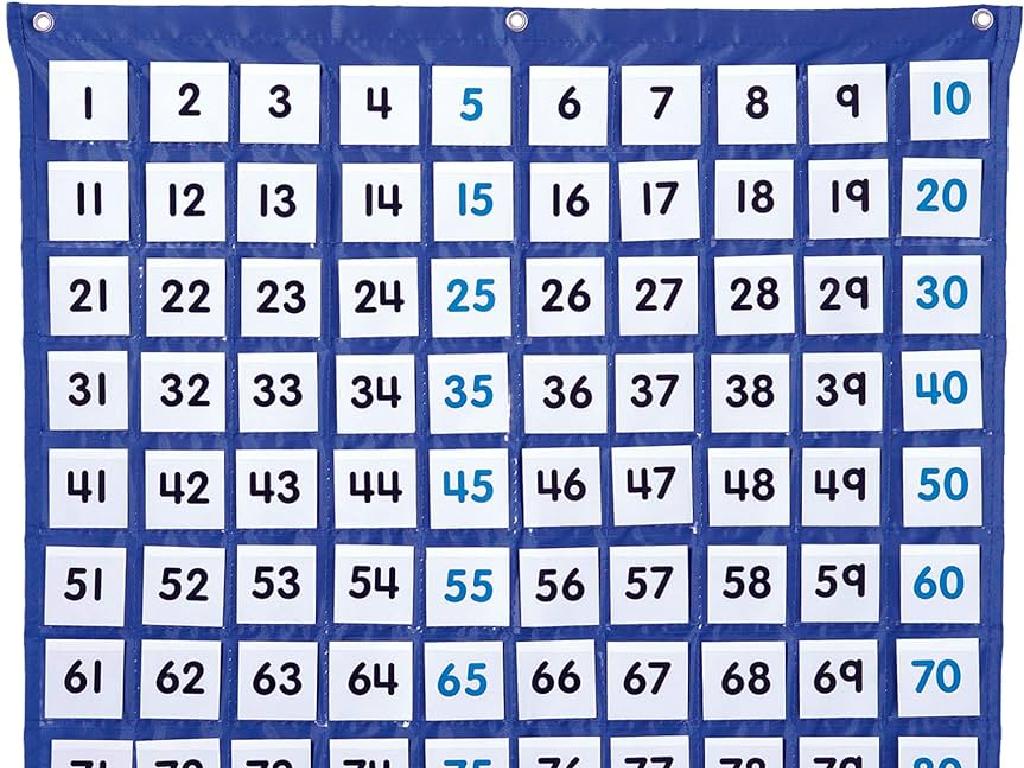Identify An Outlier
Subject: Math
Grade: Sixth grade
Topic: Statistics
Please LOG IN to download the presentation. Access is available to registered users only.
View More Content
Identifying an Outlier in Statistics
– What is an outlier?
– An outlier is a data point that is markedly different from others.
– Basics of Statistics
– Statistics involves collecting, analyzing, and interpreting data.
– Significance of outliers
– Outliers can significantly affect the results of data analysis.
– Detecting outliers in data
– Use graphs or calculations to spot the unusual points.
|
This slide introduces the concept of outliers within the field of statistics. Begin by explaining what an outlier is and how it differs from other data points. Emphasize that statistics is the science of data and that understanding outliers is crucial for accurate analysis. Discuss why outliers are important, as they can indicate errors in data collection, unique variations, or new discoveries. Teach students how to identify outliers by looking for points that don’t fit the pattern of the rest of the data, using visual aids like graphs or numerical methods such as calculating the standard deviation. Encourage students to think critically about whether an outlier should be included in the analysis or not.
Understanding Outliers in Statistics
– Define an outlier
– An outlier is a data point that differs significantly from other observations.
– Outliers in everyday life
– Heights in a class, or ages at a grade school party.
– Outliers’ impact on data
– They can skew our data, affecting the mean and other statistics.
– Recognizing outliers
|
An outlier is a data point that is markedly different from others in a set. For example, if one student is much taller than the rest in a class, that student’s height is an outlier. Outliers are important because they can have a big impact on our conclusions. They can make averages higher or lower and can indicate that something special is happening. It’s crucial to identify outliers so we can understand if they hold a special meaning or if they should be excluded from analysis to get a more accurate picture. Teach students how to spot outliers by looking for numbers that seem unusually high or low compared to the rest.
Finding Outliers in a Data Set
– Use graphs to spot outliers
– Graphs like box plots show data spread and potential outliers visually.
– Understand mean, median, mode
– Mean, median, and mode can shift due to outliers.
– Calculate the range of data
– Range: difference between highest & lowest values.
– Determine the IQR
– IQR measures the middle 50% of data, revealing outliers.
|
This slide aims to teach students how to identify outliers in a data set. Outliers are data points that differ significantly from other observations. Using graphs such as box plots can help visualize where data points lie and identify those that fall far from the rest. Understanding central tendencies like mean, median, and mode is crucial as outliers can affect these measures. Calculating the range gives a sense of the data spread, and the interquartile range (IQR) helps focus on the middle portion of the data, making it easier to spot outliers. Encourage students to practice these concepts with real data sets to solidify their understanding.
The 1.5xIQR Rule for Outliers
– Understanding IQR
– IQR measures the middle spread of data
– The 1.5xIQR Outlier Rule
– Multiply IQR by 1.5 to find outlier bounds
– Identifying Outliers with 1.5xIQR
– Use 1.5xIQR above Q3 and below Q1 to spot outliers
– Real Data Examples
– Apply rule to datasets to practice outlier identification
|
Introduce the concept of Interquartile Range (IQR) as a measure of statistical dispersion, showing the spread of the middle 50% of data. Explain the 1.5xIQR rule for identifying outliers: any data point more than 1.5 times the IQR above the third quartile (Q3) or below the first quartile (Q1) is considered an outlier. Provide examples using real datasets, such as test scores or heights, to demonstrate how to calculate IQR and apply the 1.5xIQR rule to identify outliers. This will help students understand how outliers can affect the interpretation of data.
Practice Time: Spotting the Outliers
– Identify outliers in data sets
– Pair and discuss potential outliers
– Talk with a classmate about why you think a data point is an outlier.
– Share findings with the class
– We’ll discuss as a class why these points don’t fit the pattern.
– Understand outliers’ impact on data
– Learn how outliers can skew our understanding of data.
|
This slide is for a class activity focused on identifying outliers in different data sets. Students will work individually at first to try and spot any outliers in the data sets provided. They will then pair up with a neighbor to discuss their findings and reason out why certain points might be considered outliers. Following this, there will be a class discussion where students can share their thoughts and learn from others’ perspectives. The teacher should facilitate the discussion, ensuring that students understand how outliers can affect the overall interpretation of data, such as averages. Possible activities could include identifying outliers in test scores, heights of students, or daily temperatures over a month. The goal is for students to recognize that outliers are points that don’t fit the expected pattern in a set of data.
The Impact of Outliers in Statistics
– Outliers’ influence on data
– Outliers can skew averages and other statistical measures.
– Deciding to include or exclude
– Consider the cause: error or natural variation?
– Outliers’ real-world implications
– Outliers can indicate important discoveries or errors.
– Case studies of outliers
|
Outliers are data points that differ significantly from other observations. They can greatly affect the results of data analysis, such as mean and standard deviation, leading to potential misinterpretations. Deciding whether to include outliers involves understanding their cause; if they result from measurement error, they may be excluded, but if they’re a natural part of the data, they should be included. Real-world implications include the impact on scientific research, business decisions, and more. Discuss case studies where outliers have led to significant discoveries or changes in approach to emphasize their importance.
Class Activity: Outlier Hunt
– Group activity to find outliers
– Use provided data set handouts
– Each group gets a unique set of data to analyze
– Calculators will assist in calculations
– Ensure everyone knows how to use the calculator for this task
– Discuss and identify any outliers
– Share findings with the class for discussion
|
This activity is designed to foster teamwork and apply statistical concepts to identify outliers. Divide the class into small groups and provide each with a handout containing a different data set. Students will use calculators to help them analyze the data. The objective is for each group to work together to find and agree on which data points are outliers. After the activity, each group will present their findings to the class, explaining how they identified the outliers. This will also serve as a great opportunity for students to practice their presentation skills. As a teacher, circulate the room to provide guidance and ensure that each group is on the right track. Possible variations of the activity could include data sets from different contexts, such as sports statistics, weather data, or classroom test scores.
Conclusion: Understanding Outliers
– Recap: What is an outlier?
– An outlier is a data point that differs significantly from other observations.
– Importance of outlier detection
– Identifying outliers helps in accurate analysis by not skewing the data.
– Reflect on today’s learning
– Share your thoughts
|
As we wrap up today’s lesson, let’s review the key points about outliers. An outlier is a data point that is markedly different from the rest of the data, which can be due to variability in the measurement or it may indicate experimental error; the latter can cause problems in statistical analyses. Understanding why it’s crucial to identify outliers is part of learning good data analysis practices. Encourage students to share what they’ve learned about outliers, how they might affect data interpretation, and why they think it’s important to recognize them. This reflection helps solidify their understanding and allows them to express their insights, fostering a deeper grasp of the topic.






